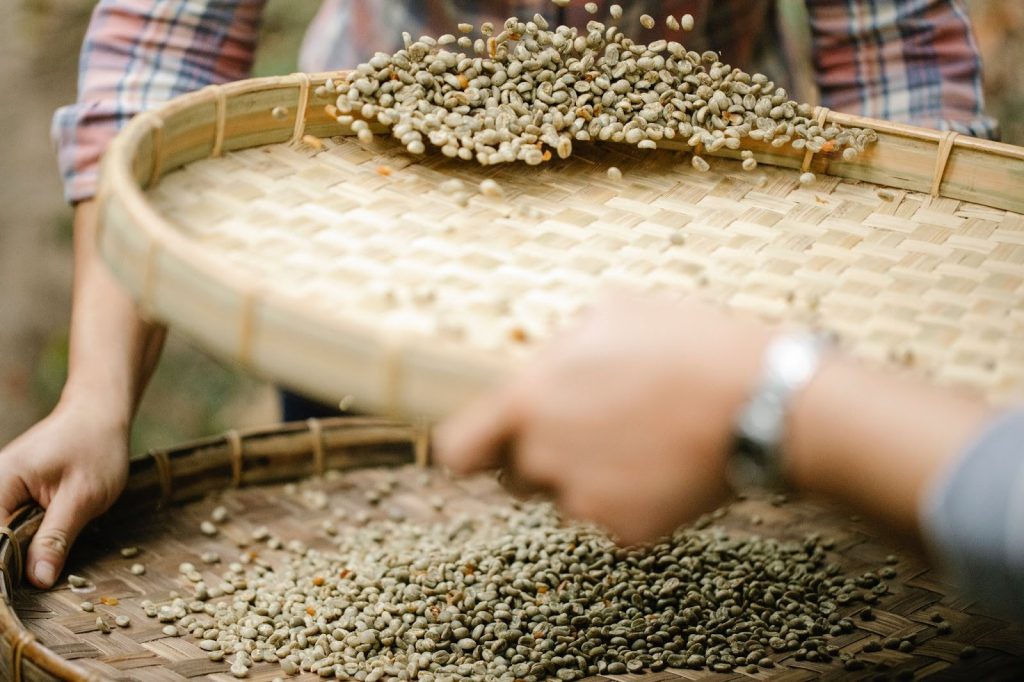Deeply flavored and akin to a touch of creativity, the world of coffee has become the stage for a fascinating phenomenon. Not just a drink that awakens the morning spirit, but an art form that dances on the surface of the peaceful black liquid.
History and Origin of Latte Art
Latte art, a mesmerizing art on the surface of coffee drinks, exudes the charm of a long history that began in traditional cafes in Italy. Modern latte art first developed in America in the late 1980s, particularly in San Francisco. At that time, baristas began experimenting with the technique of pouring steamed milk into espresso to create artistic patterns on the surface of the coffee.
One of the key figures in the development of latte art in America is David Schomer, a barista from Seattle who is known for his skill in producing smooth, well-textured milk foam. This allows baristas to create patterns such as hearts, leaves, and rosetta by using a precise milk pouring technique known as “free pour.”
As the technology of espresso machines and coffee equipment evolves, baristas from around the world continue to innovate in creating increasingly complex and beautiful designs. Today, latte art is not just a garnish for coffee drinks, but also an expression of art that combines technical skills and creative imagination in a beautiful cup of coffee.
Latte Art Around the World
In various places around the world, baristas use latte art techniques that reflect local culture and creativity. For example:
1. Traditional Motifs
In some regions, baristas adopt traditional motifs in latte art, creating images or patterns inspired by folk art or local cultural heritage.
2. Japanese Minimalist Art
In Japan, famous for its love of minimalist beauty, baristas often use simple latte art techniques, with smooth lines or simple images that reflect Japanese aesthetics.
3. The Rise of Innovation in America
Latte art is gaining popularity in American cafes and is becoming a symbol of high quality in coffee presentation. It has become an integral part of American coffee culture, with many cafes using it to showcase their baristas’ skills. Latte art competitions, such as those held by the Barista Guild of America, help to encourage growth and innovation in the art.
4. African Ethnic Motifs
In some African cafes, baristas depict ethnic motifs using latte art techniques that highlight patterns and colors that are typical of certain tribes.
5. Modern and Traditional Fusion in Asia
In some cafes in Asia, especially in countries with rich cultural heritage such as Korea or China, baristas try to combine traditional elements with a modern twist in their latte art.
Latest Trends and Innovations
In the coffee industry, some of the latest trends and innovations include:
1. Sustainable Coffee
The rise of environmental awareness has inspired the sustainable coffee trend, with an emphasis on environmentally-friendly production, use of fair trade beans, and responsible business practices.
2. Coffee From Microregions
Increased interest in coffee from microregions or smallholders allows consumers to explore the unique flavors and characteristics that arise from specific geographic locations.
3. Technological Innovation in the Coffee Making Process
The use of technologies such as smart coffee machines and innovative roasting methods have enriched the coffee-making process, giving baristas more control to explore various flavor profiles.
4. Combination Drink
The combination of coffee with other ingredients, such as tea, spices, or even alcohol, is becoming an increasingly popular trend, opening up new opportunities for unique coffee drink creations.
Latte art is not just a visual addition to a cup of coffee; it has a significant impact on the consumer experience and enriches coffee culture in various locations.
Positive Contributions of Latte Art:
Here are some ways in which latte art makes a positive contribution:
1. Aesthetics and Visual Enjoyment
Latte art creates an alluring visual aesthetic, lending an element of beauty to a cup of coffee. It’s not just a drink, but also a work of art that is savored before the first sip.
2. Sensory Experience
Creative strokes on the coffee surface not only touch the sense of sight, but also enhance the overall sensory experience. These visual touches can affect the perception of flavor, enhancing the enjoyment of the drink.
3. Expression of Local Identity
Latte art often reflects the local identity and creativity of the barista. It can be a tool to reinforce the uniqueness of a cafe and create an icon associated with the coffee culture of a place.
4. Social Interaction and Social Media
Attractive latte art designs often become popular content on social media. This not only promotes the cafe for free, but also increases the interest of consumers who want to have a unique experience and share their moments visually. With its various contributions, latte art is more than just a decoration; it enriches the coffee experience and plays an important role in shaping global coffee culture.
Following the trail of latte art around the world, we realize that more than just a beverage, a cup of coffee has become a canvas for creativity and cultural heritage. From the beauty of the strokes on each surface of the brown liquid, we discover the ways in which this art embraces diversity, creating an unforgettable experience for coffee connoisseurs. With each sip, we experience a touch of local aesthetics, understand the story behind each stroke, and join a global community that shares a love for coffee. With latte art, we not only savor the flavors, but also celebrate the beauty that unites us on a coffee brewing journey that never stops innovating and inspiring. Sip of Art takes us on a journey of taste and beauty that involves every substance in a cup, marking an unforgettable mark in the world’s coffee culture.
Read the most comprehensive coffee articles on KopiKita and find out everything you need to know about the world of coffee, from the types of beans to how to brew them.









